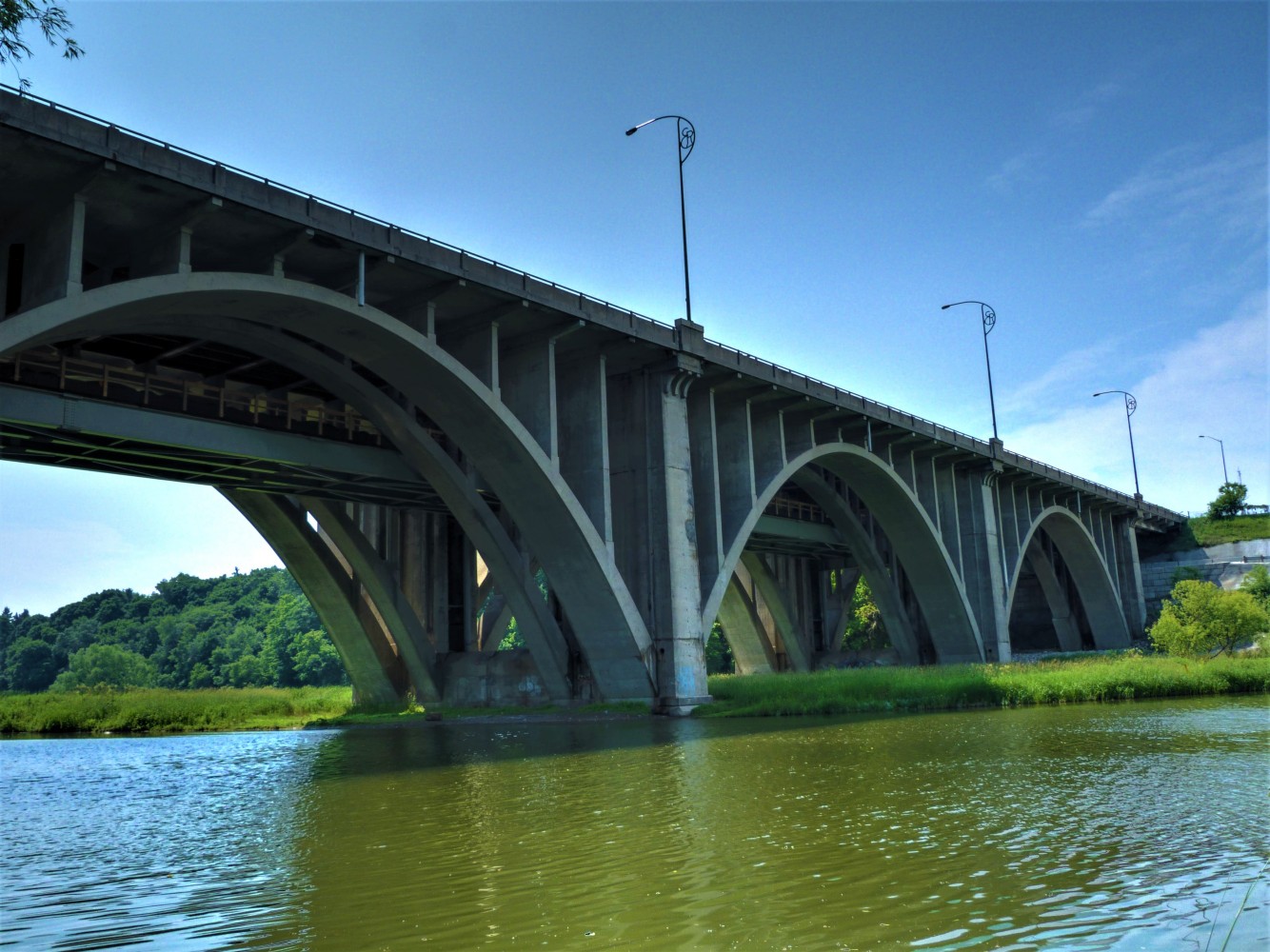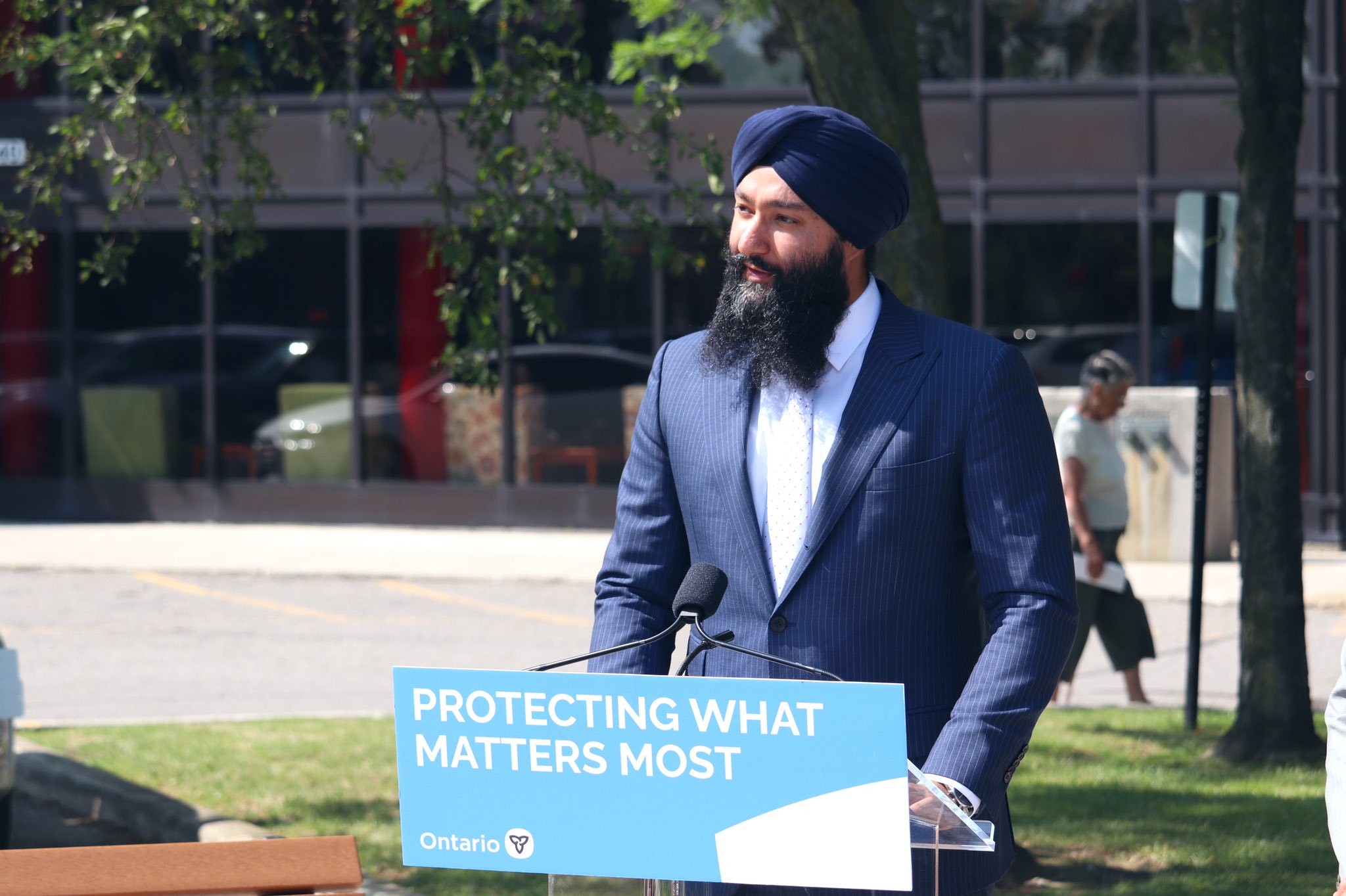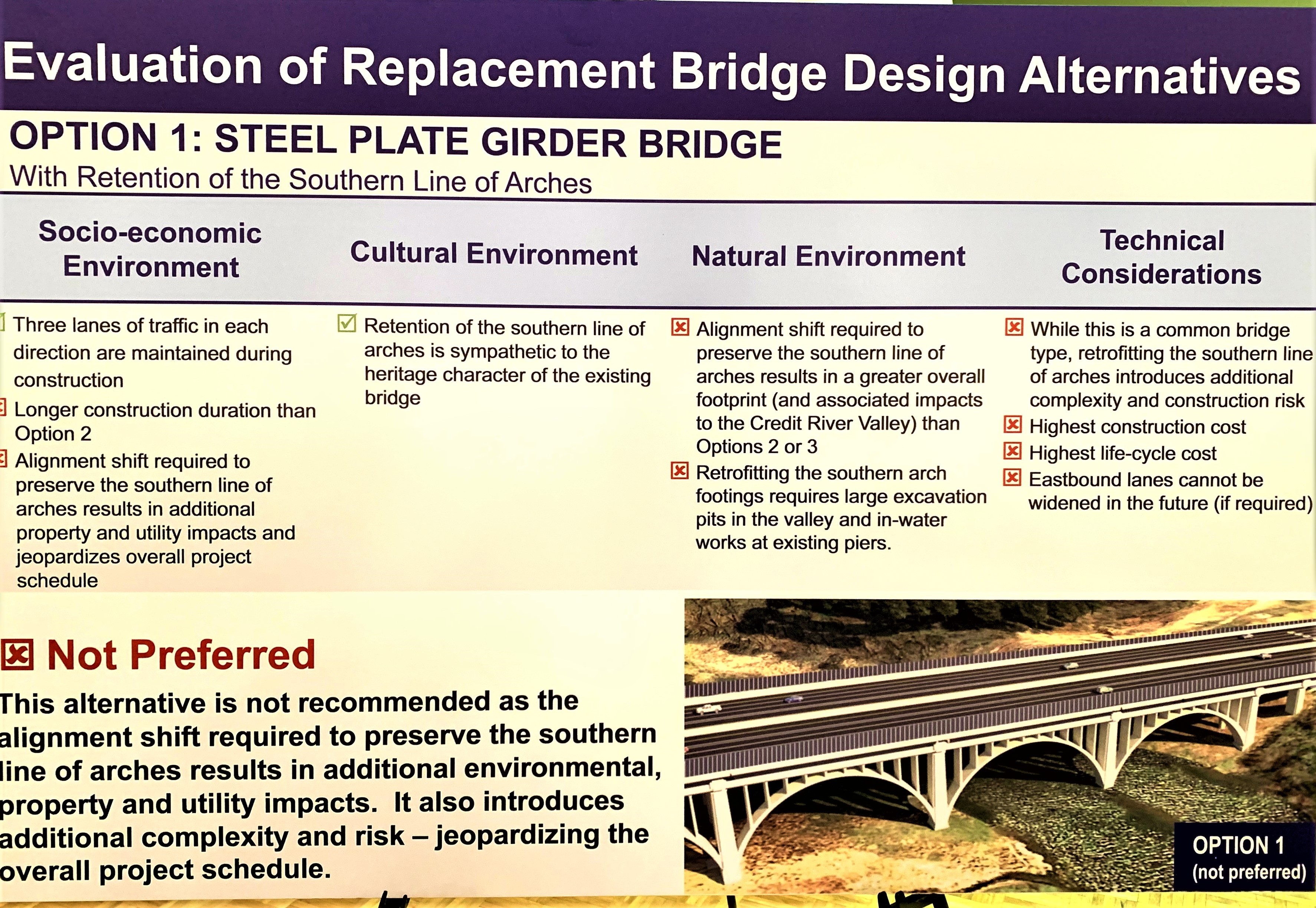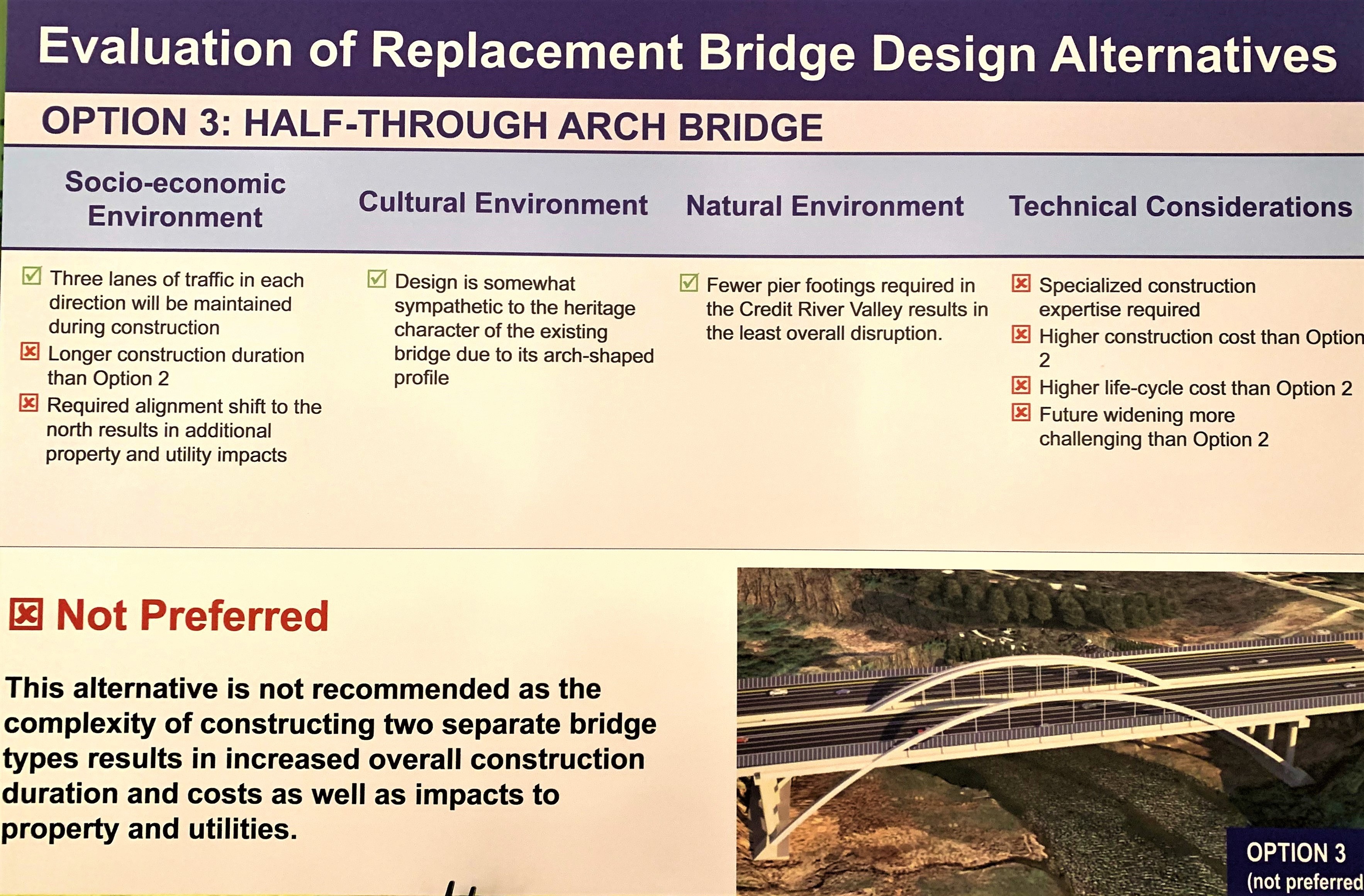
Ford government wants to reduce public involvement that saved QEW Credit River bridge
When the Doug Ford government swept to power in June 2018, it pushed a populist conservative mantra: eliminating red tape. At almost every opportunity, prospective PC MPPs talked it up, saying it was the scourge of a stagnant, 15-year Liberal legacy.
The term, which can apply to almost any level of bureaucracy, has been central to the current administration at Queen’s Park. Before COVID-19, it was the signature of Doug Ford, as the Premier brought down his scythe hoping to balance Ontario’s budget. Ford deemed the term so important that he created the role of Associate Minister of Small Business and Red Tape Reduction.
The position, occupied by Brampton PC MPP Prabmeet Sarkaria, focuses on removing barriers and inefficiencies caused by paperwork, with a particular emphasis on local businesses.

Brampton PC MPP Prabmeet Sarkaria Associate Minister of Small Business and Red Tape Reduction has been tasked with carrying out Ford's agenda of reducing "red tape" in government systems.
Few with experience in government would argue the machinery of its bureaucracy is inefficient. But political opinions diverge when it comes to the level of oversight, safeguarding or thoroughness necessary to keep us and our communities safe.
Toward the end of 2019, the Ford government was on a streak. Like some kind of manual shredder, the red-tape scissors were flying. After cutting the number of councillors in Toronto, downloading a variety of health costs and trampling over the local process to approve projects pitched by developers, Queen’s Park turned its attention to Mississauga.
To the shock of local councillors and residents, a plan to rehabilitate the QEW Credit River bridge, which had been in place for years, was pushed to one side in favour of a proposal to demolish the provincially recognized heritage structure. Overnight, the Province replaced its preferred option of rehabilitating the towering bridge and building an adjacent overpass. Instead, it marched forward with plans to demolish it, followed by the construction of two box girder bridges.
Councillors, including Stephen Dasko (Ward 1), Carolyn Parrish (Ward 5), Ron Starr (Ward 6) and George Carlson (Ward 11), were furious at the suggestion. The bridge, originally built in 1934, predates even the incorporation of the City of Mississauga itself and is regarded by many as an icon.

Ward 1 Councillor Stephen Dasko
Feeling the heat of local backlash, the Province performed a sharp u-turn just before Christmas and promised the historical structure would stand. The move was applauded, with Parrish sharing her “sincere appreciation to the Government of Ontario” and Dasko “very pleased”.
Local PC MPP Rudy Cuzzetto was credited by his government for his advocacy on the topic.
But it was residents who made their voices heard loudest, making it clear that any action to destroy the significant heritage structure, would be followed by severe political consequences.
Now, changes to the legislation governing Environmental Assessments (EAs) threaten to remove public engagement from the project and others in the future. EAs are at the heart of due diligence on infrastructure projects, testing for a wide range of conditions critical to safe, responsible and well-planned construction.


Environmental Assessments allow for consultations on big projects and potential options for what can be done moving forward, like those offered for the Credit River Bridge (above). Changes proposed by the PCs threaten to remove certain types of public engagement.
“Environmental Assessment is where you look at the need for something and the alternatives to it,” Tim Gray, executive director of Environmental Defence, told The Pointer. He added the PC’s red tape justification only made sense “if you see doing the job right as ‘unnecessary duplication’”.
Although the Province has promised to keep the original Mississauga QEW heritage bridge intact, plans are still forming on the construction of its twin bridge to the north. Building is scheduled to begin in 2021, but many elements are not yet finalized.
“The government’s proposal to exempt some projects from making DCRs [Design and Construction Report] available for public review does apply to the QEW Credit River Improvement Project,” Michael O’Morrow, senior issues advisor for the Ministry of Transportation, explained. He pointed out the regulations are still being finalized, but when they are, public participation will be reduced to a web comment box.
The changes stem from Bill 197 (COVID-19 Economic Recovery Act), an omnibus piece of legislation purporting to help with Ontario’s COVID-19 response, which appears to go far beyond its pandemic recovery mandate with a variety of other potential applications. The Bill includes sweeping changes and exemptions to EAs for major projects, including the GTA West Corridor for a new 400-series highway in Brampton and Caledon. It was blasted by the NDP, which said the current administration would “pave the Greenbelt”.
As a result of the approved legislation, a series of regulations were posted online in July for public comment. One features a list of projects exempt from various parts of the EA process, including the Credit River Bridge. The move says it will “eliminate duplication” from the original EA, which was completed seven years ago in 2013, while also reducing timelines for building projects.
When finalized, the Ministry would not be required to complete a review of the The Transportation Environmental Study Report (TESR). The Ministry would also not complete a Design and Construction Report “documenting the environmental assessment process during detail design” for the public to review. A final safety check by the Province and the opportunity for public input would both be scrapped.
“They [the public] are going to know things about cultural heritage, use of the area, social values. All of those things that only local people who have direct experience with the environment are likely to bring to the floor,” Gray said. “So excluding them from being consulted means you don’t collect as robust a pool of information from which to make a decision.”
In June, the Ministry posted the first DCR for the new twin bridge allowing for 30 days consultation and reviewed its TESR. But O’Morrow says the consortium that will be selected to operate the project will prepare “at least one” more DCR, which — depending on the state of regulations — may not be open to the usual forms of public feedback.
After the Province had to be stopped from demolishing the bridge through public advocacy, the change has caused concern.
“I’m a big believer that you have to respect and go through the process,” Dasko said, expressing a fear that residents' voices may be limited. The local councillor says he will be reaching out to Queen’s Park to make sure his “concerns are heard”. He added that cutting red tape had unintended consequences, citing the noise coming from construction sites in his ward, currently allowed to operate from 6 a.m. to 10 p.m. under Provincial rules.
Cuzzetto, the local PC MPP and elected voice of Lakeshore residents, repeated Provincial talking points about eliminating duplication in a response to The Pointer.
He, like the Ministry of Transportation, pointed out regulations are still being finalized and are not yet in force. “I spoke directly to many residents,” he said, saying Ward 2 Councillor Karen Ras also objected to the addendum process. He highlighted that, when regulations are passed, an opportunity to comment would still be available through the project’s website.
Ontario’s approach to red tape and the environment came under fire Wednesday with the release of the annual report by the Auditor General. Looking at regulations and greenhouse gas emissions, it said the government should begin leading by example on environmental issues.
The report found some ministries were not posting significant proposals on the online Environmental Registry or giving the public enough time to comment, by accident or design. Input on environmental issues is being bypassed. In practice, curtailing the oversight had the effect of omitting the right to appeal decisions on 197 environmentally significant projects.
“Given that the Environmental Bill of Rights has been with us for 26 years, the level of non-compliance by ministries is surprising,” Auditor General Bonnie Lysyk said. “We strongly encourage the ministries to be more diligent in this regard.”
As Lysyk's report suggests, changes to environmental processes in favour of efficiency have significant consequences.
“We breathe air, drink water and live on land: you can’t escape the natural world,” Gray added. “Dismissing it as being [un]important always results in it coming back to bite you.”
Email: [email protected]
Twitter: @isaaccallan
Tel: 647 561-4879
COVID-19 is impacting all Canadians. At a time when vital public information is needed by everyone, The Pointer has taken down our paywall on all stories relating to the pandemic and those of public interest to ensure every resident of Brampton and Mississauga has access to the facts. For those who are able, we encourage you to consider a subscription. This will help us report on important public interest issues the community needs to know about now more than ever. You can register for a 30-day free trial HERE. Thereafter, The Pointer will charge $10 a month and you can cancel any time right on the website. Thank you.
Submit a correction about this story


